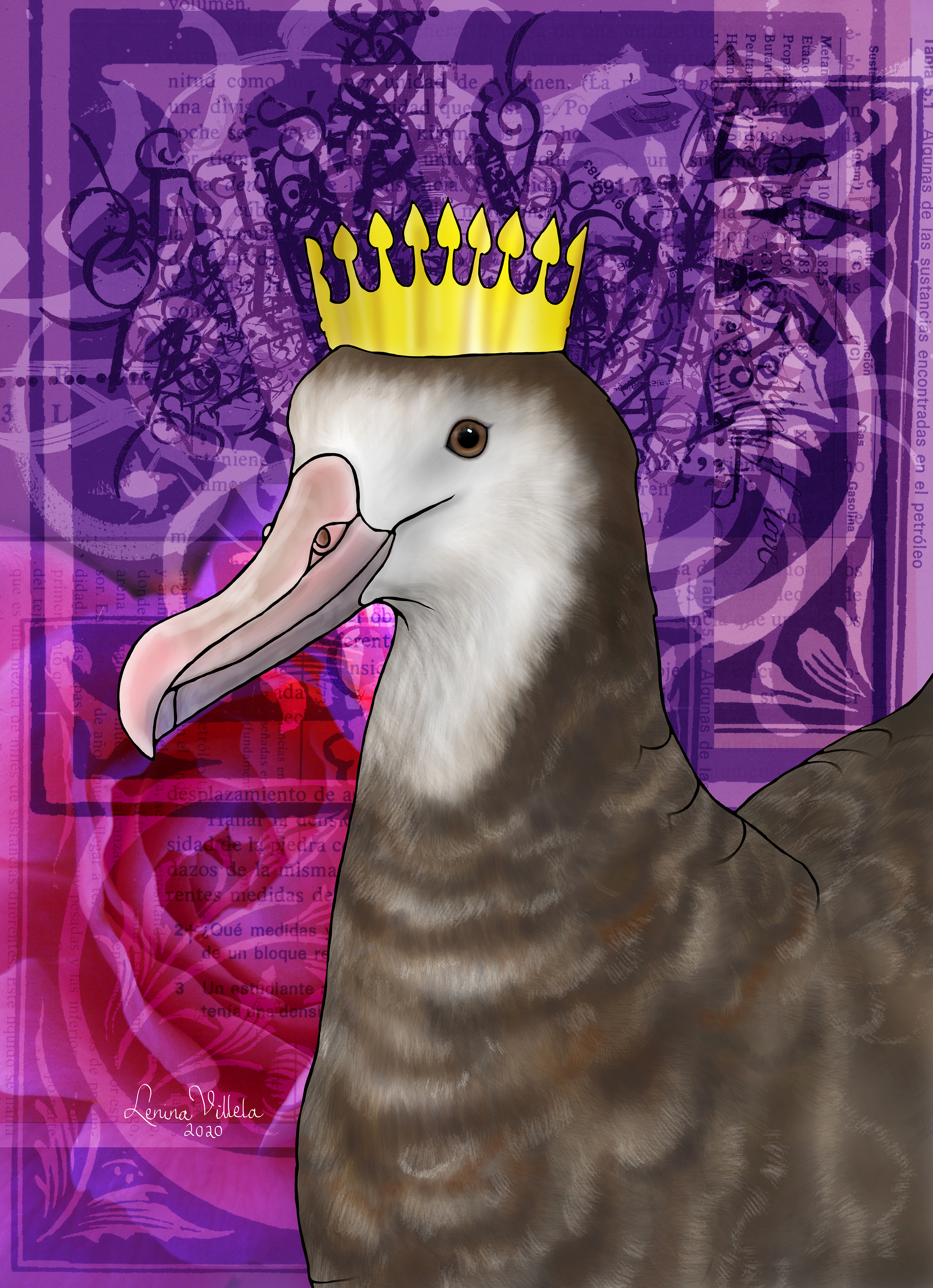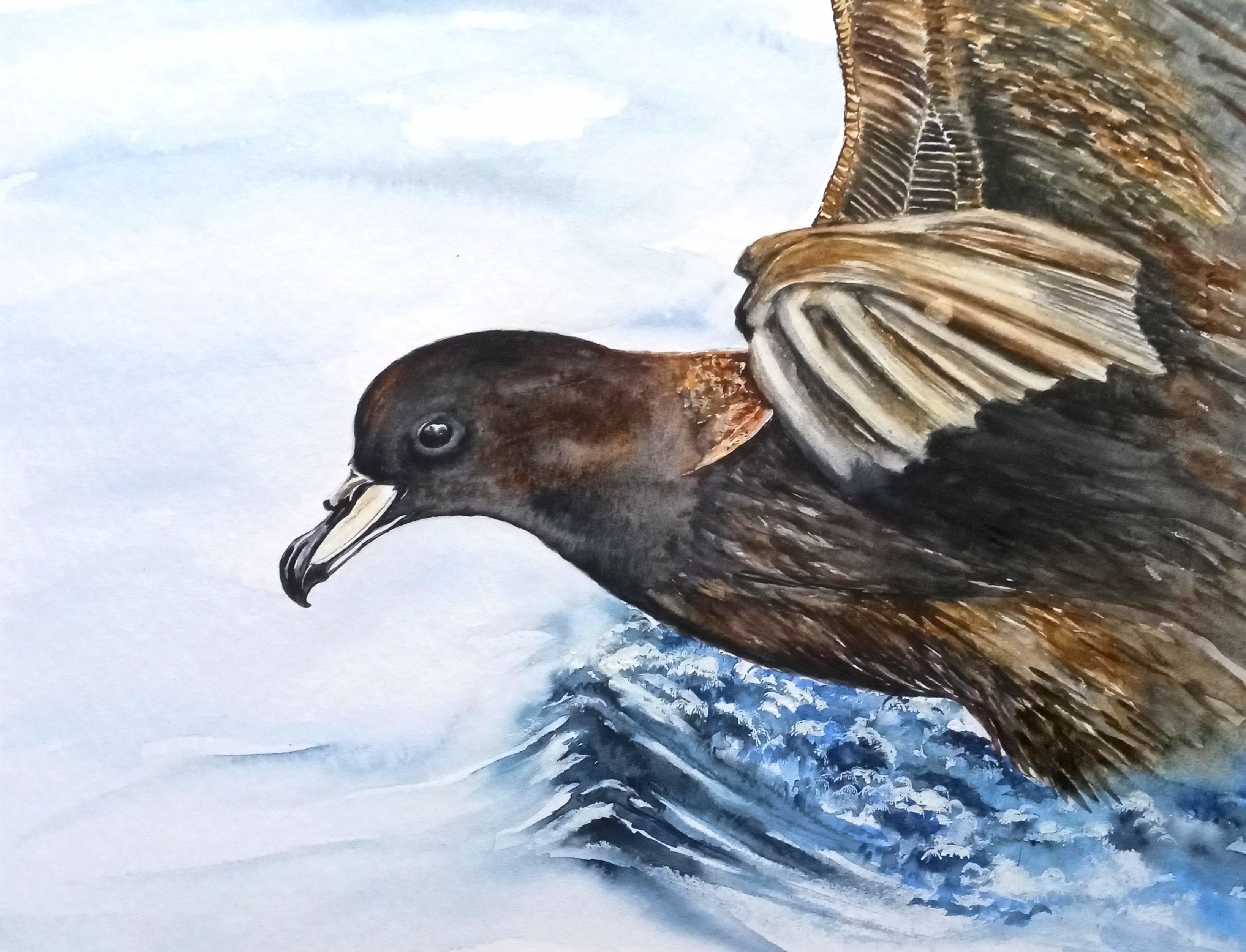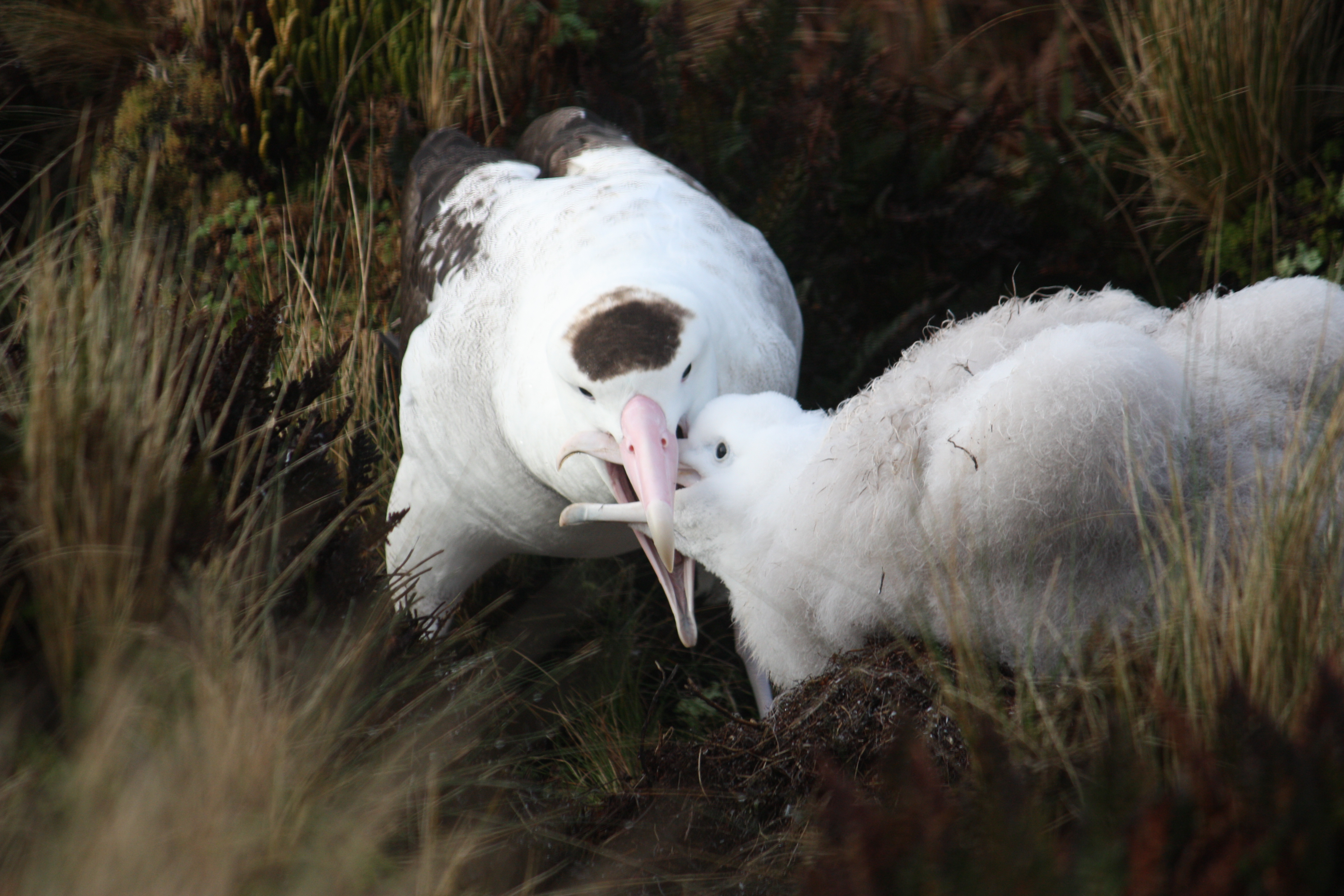
An ACAP-listed Antipodean Albatross, artwork by Lenina Villela of Artists & Biologists Unite for Nature (ABUN) for World Albatross Day, 19 June 2020
UPDATE: VOTING IS NOW OPEN UNTIL 17h00 NZST, SUNDAY 28 SEPTEMBER: VOTE NOW FOR THE ANTIPODEAN ALBATROSS AS YOUR FIRST CHOICE FROM HERE.
The winner to be announced on Monday 29 September.
******************************************
It will soon be that time again and New Zealanders will be scurrying to vote for their favourite birds as Forest & Bird’s iconic Bird of the Year competition (BOTY2025) returns next month. Operated in a light-hearted way, but with a serious underlying message, the competition aims to highlight the conservation issues facing some of New Zealand’s best known, and some of its least known, birds. This year, 70 species have been chosen, many of them, but not all, considered to be globally threatened.
New Zealand’s BOTY competition has been running since 2005. In some years it has thrown up intriguing results with hints of skullduggery and claims of foul (fowl?) play surfacing. As Forest & Bird itself admits on its BOTY page “In 2025, we’re celebrating 20 years of ruffled feathers as everyone’s favourite event on the conservation calendar reflects on two decades of creativity and controversy.”

In 2021 the winner was not even a bird, but one of New Zealand’s only two non-marine native mammals, the Long-tailed Bat Chalinolobus tuberculatus (the other is also a bat). Proponents argued that its lack of feathers (or presumably its inability to lay eggs) was outweighed by its ability to fly. I suppose I could add that every albatross has a bat inside it! Two years later the American late show comedian John Oliver punted the Australasian Crested Grebe, leading to unprecedented levels of international voting for it and allowing it to win by a mile, thereby arousing much consternation in Aotearoa (the Land of the Long White Cloud). The 2024 competition was less controversial, with the beleaguered Yellow-eyed Penguin winning for a second time (the first time in 2019).

An ACAP-listed Westland Petrel, watercolour by ABUN artist Helen Worthington, after a photograph by Frank Valckenborgh
You will be able to cast your preferential ballot at birdoftheyear.org.nz. Five procellariiform seabirds are included, two of them ACAP-listed species. They are the Endangered Antipodean Albatross Diomedea antipodensis, the Endangered Westland Petrel Procellaria westlandica. the Endangered Hutton’s Shearwater Puffinus huttoni, the Vulnerable Cook’s Petrel Pterodroma cookii and the Fairy Prion Pachyptila turtur (Least Concern).
An Antipodean Albatross feeds its chick on Antipodes Island, photograph by Keith Springer
The Antipodean Albatross or Toroa already has its Campaign Team in place, with Ahaan Halwai as its Manager, saying “We are a determined group of neurodivergent individuals set on making Toroa bird of the year and prove they are the best bird (as we have always known) and WE WILL NOT STOP UNTIL WE HAVE WON!!!!”
Read more about the Antipodean Albatross, a regular BOTY combatant, and how it came second in BOTY2020 (its best position to date) from here. The Antipodean Albatross (and all 22 albatross species) were featured by Artists & Biologists Unite for Nature (ABUN) for the inaugural World Albatross Day on 19 June 2020 with its theme of “Eradicating Island Pests”. View its ACAP Species Infographic in three languages from here.
So far it seems the Westland Petrel or Tāiko (and the other three contesting procellariiforms) do not have Campaign Teams touting their winning credibility. No albatross (or any procellariform seabird for that matter) has won the competition since its inception in 2005, so let’s see if 2025 can be a turn around with the globally Endangered Toroa on the top step for once.
Voting (instructions coming soon) will open on Monday 15 September 2025 and close on Sunday 28 September 2025.
John Cooper, Emeritus Information Officer, Agreement on the Conservation of Albatrosses and Petrels, 15 August 2025, updated 15 September 2025

 English
English  Français
Français  Español
Español 